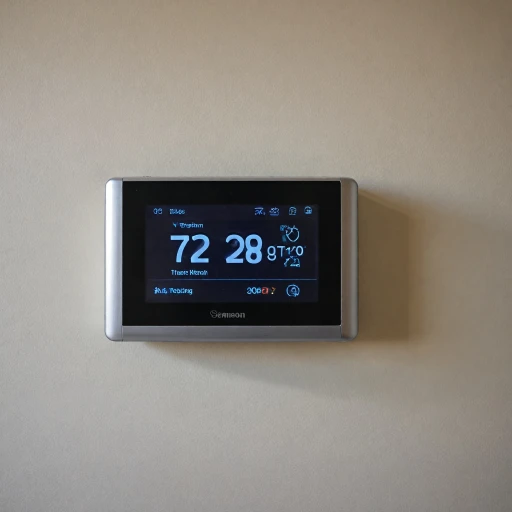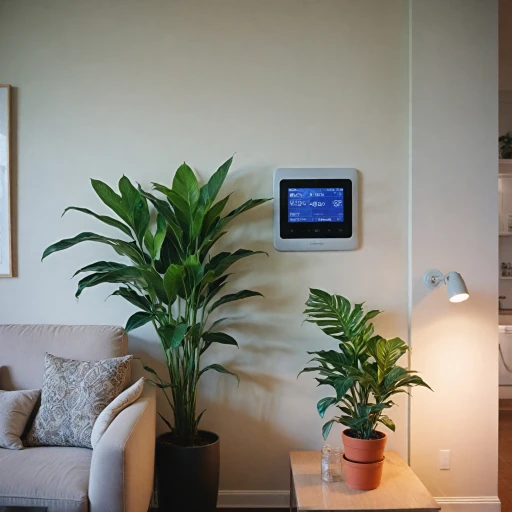Understanding Line Voltage Systems
Understanding the Foundation of Line Voltage Systems
Line voltage systems are primarily used in homes with electric heating sources like baseboard heaters, fan-forced heaters, and even in some electric radiant floor heaters. These systems typically operate on 120 or 240 volts, which differentiates them from low voltage systems commonly associated with gas or oil heating solutions. For homeowners aiming to enhance their home comfort, integrating a smart thermostat with these line voltage systems can offer numerous advantages. Unlike traditional thermostats, smart thermostats provide greater control and programmable functionalities, allowing you to manage temperature settings remotely via a smartphone app or platforms like Amazon Alexa. Importantly, not all smart thermostats are compatible with line voltage systems. Brands like Mysa and Honeywell offer specific models designed for these high-energy systems, ensuring compatibility and effectiveness. This is crucial for avoiding issues that may arise from connecting incompatible devices, leading to potential damage to the heating system. To ensure you're choosing the best smart thermostat for your setup, consider understanding the key features that cater specifically to line voltage systems. This knowledge will be a stepping stone as you proceed to explore the benefits these devices offer and how to install them effectively. For more detailed guidance on enhancing comfort with such thermostats, visit this insight on smart heated floor thermostats.Benefits of Smart Thermostats for Line Voltage
Advantages of Intelligent Control for Electrical Systems
Smart thermostats, particularly those designed for line voltage systems, bring unparalleled advantages to homes using electric baseboard heaters and other high voltage heating solutions. Let's explore the significant benefits these advanced devices offer:- Energy Efficiency: A major draw of smart thermostats is their ability to enhance energy efficiency. With precise temperature control, these devices ensure that heating is used only when necessary, leading to substantial savings on utility bills. By learning your schedule and preferences, certain models, such as Nest Learning Thermostat, adapt intelligently over time.
- Remote Accessibility: Through connectivity with smart home ecosystems, like Google Nest or Amazon Alexa, you can adjust the temperature from anywhere using your smartphone or voice commands. This feature allows you to manage your heating system even when you are not at home, ensuring comfort upon your return.
- Programmable Schedules: Programmable thermostats allow users to set heating schedules that align with their daily routines. With day programmable options, you can customize the heating patterns to match your activities throughout the week, maximizing comfort and reducing waste.
- Enhanced User Experience: Many line voltage smart thermostats, like those from Mysa and Honeywell, come with user-friendly interfaces and are designed for easy integration with existing systems, offering seamless control and monitoring of your home environment.
- Adaptability to Multiple Zones: For homes with multiple heating zones, smart thermostats provide centralized control, allowing independent management of each area. This means you can enjoy warmth in occupied areas while conserving energy elsewhere.
Top Features to Look for in a Smart Thermostat
Features to Prioritize for Smart Thermostats in Line Voltage Systems
When selecting a smart thermostat designed for line voltage systems, identifying the top features is crucial to maximize its efficiency and ease of use. Here's what to look for:- Compatibility: Ensure that the thermostat is compatible with your specific heating type, whether it's electric baseboards, fan-forced heaters, or radiant systems. Models like the Honeywell and Mysa smart thermostats are optimized for various line voltage applications.
- Connectivity: Seamless integration with home automation systems such as Amazon Alexa or Google Nest significantly enhances control convenience. Look for models that offer app-based management for remote adjustments, which can be convenient when paired with devices like an Amazon smart speaker.
- Energy Saving Modes: A well-designed smart thermostat will reduce energy consumption through programmable schedules or learning capabilities. Consider options like a Nest Learning Thermostat that adapts to your routines and efficiently regulates temperature settings.
- User-Friendly Interface: Intuitive screens or app interfaces facilitate easy adjustment of settings, ensuring you maximize the thermostat's potential without requiring a steep learning curve. A programmable thermostat with clear digital displays or touch-screen features would be ideal.
- Thermal Control Precision: Check for precise control over temperature settings. Voltage thermostats with advanced sensors provide accurate feedback and maintain the desired environment, optimizing comfort and system longevity.
- Smart Alerts and Notifications: A valuable addition is the ability to receive alerts for system issues or suggested optimizations, ensuring proactive maintenance and efficient performance.
Installation Tips and Considerations
Step-by-Step Guidance for Smooth Thermostat Installation
Installing a line voltage smart thermostat can seem challenging, but following a few essential steps can simplify the process and ensure optimal functioning. Whether you're replacing an old unit or setting up a thermostat for the first time, proper installation is key to maximizing your home's comfort and efficiency.- Understand Your Wiring: Familiarize yourself with your existing line voltage system and the wiring setup. Most line voltage thermostats, like those from Honeywell or Mysa, will use two or four wires. It's crucial to match your new thermostat's wire connections—often labeled as L1, L2, and output wires—to your heating system.
- Power Off for Safety: Safety should always come first. Ensure the power to your heating system is completely turned off at the circuit breaker to avoid any accidents during installation.
- Consider Smart Compatibility: If you're integrating with platforms like Amazon Alexa or Google Nest, ensure that your smart thermostat supports these features for convenient voice control. This compatibility enables efficient programming and remote temperature adjustments.
- Optimal Placement: Improper placement can affect your thermostat's accuracy. Avoid installing it near windows, doors, or direct sunlight. Central placement in the room offers more precise temperature control.
- Read the Manual: Every model, from the best smart thermostats to basic programmable units, will come with a specific manual. Thoroughly reading installation instructions for brands like Honeywell or other programmable thermostats ensures correct setup.
- Test Your System: After installation, turn on the power and test your system. Check if your electric heaters or fan-forced systems respond as expected. This step confirms your thermostat controls are functioning correctly.
Maximizing Energy Savings
Optimizing Energy Use for Cost Efficiency
Maximizing energy savings with a line voltage smart thermostat involves a strategic approach to your heating system. These smart devices are designed to provide precise control over your electric heaters, resulting in increased efficiency and reduced energy consumption. To achieve the best results, consider the following tips:
- Programmable Features: Utilize the programmable thermostat feature to set a heating schedule that aligns with your daily routine. For instance, lower the temperature when you're not at home and have it warm up before your return. A 7-day programmable option offers flexibility tailored to your lifestyle.
- Learning Capabilities: Some smart thermostats have learning capabilities, such as the Nest Learning thermostat and Honeywell's models, adjusting to your preferences over time. Leveraging these features can enhance comfort without sacrificing efficiency.
- Remote Control: With integration options like Amazon Alexa, you can adjust your thermostat settings remotely. This can be particularly useful for unplanned schedule changes, ensuring you're not heating an empty home.
- Single Pole vs. Double Pole: Understand the type of line voltage thermostat you have. Single pole models might not turn off completely, so look for energy-saving alternatives or upgrades if necessary.
- Monitoring and Adjustments: Regular monitoring of your energy consumption and making necessary adjustments will also help in saving energy. Use the smart thermostat's data insights to identify patterns and optimize your settings.
By implementing these practices, you can enjoy a comfortable home climate while saving on energy bills, making your investment in smart thermostat technology worthwhile.






